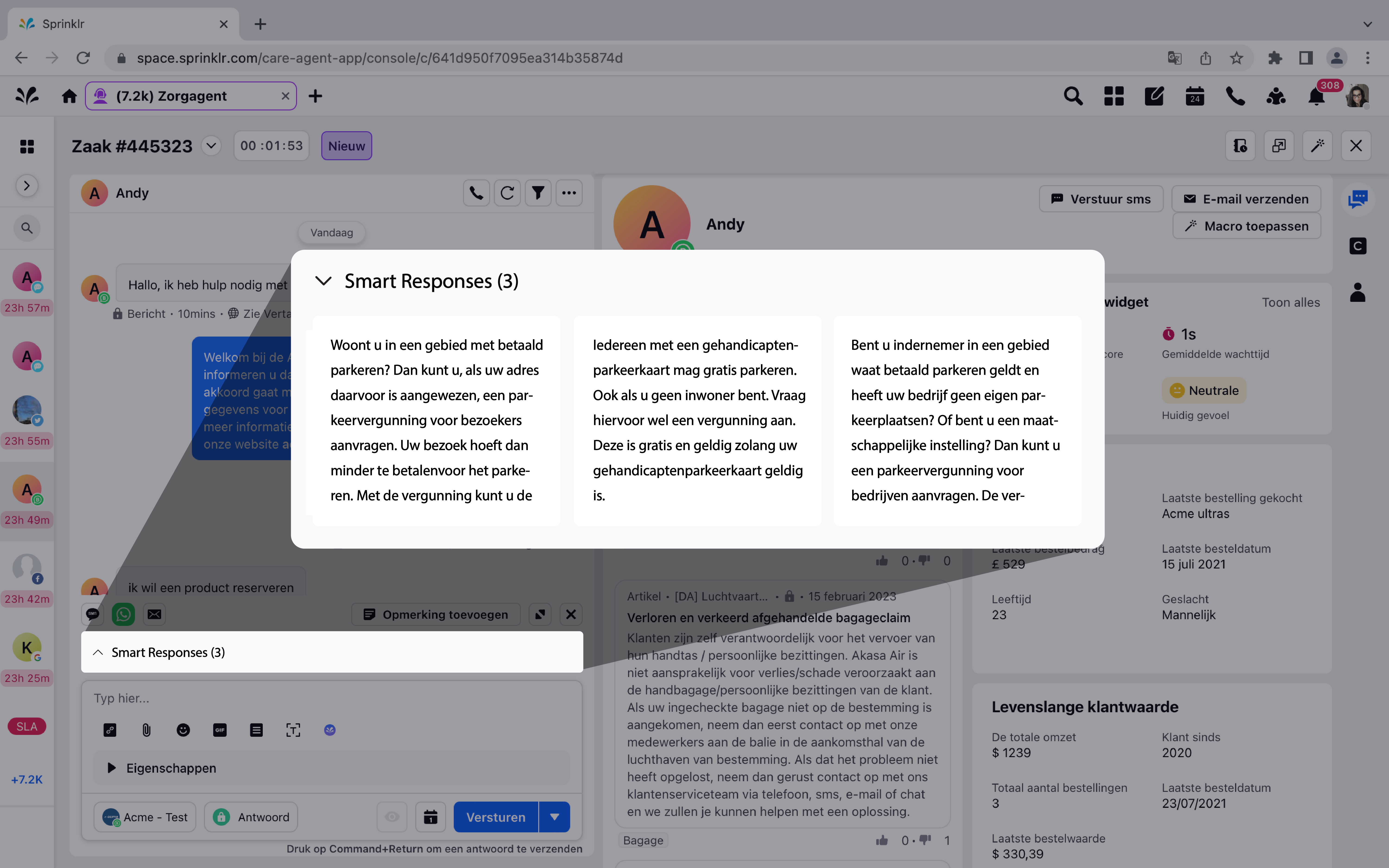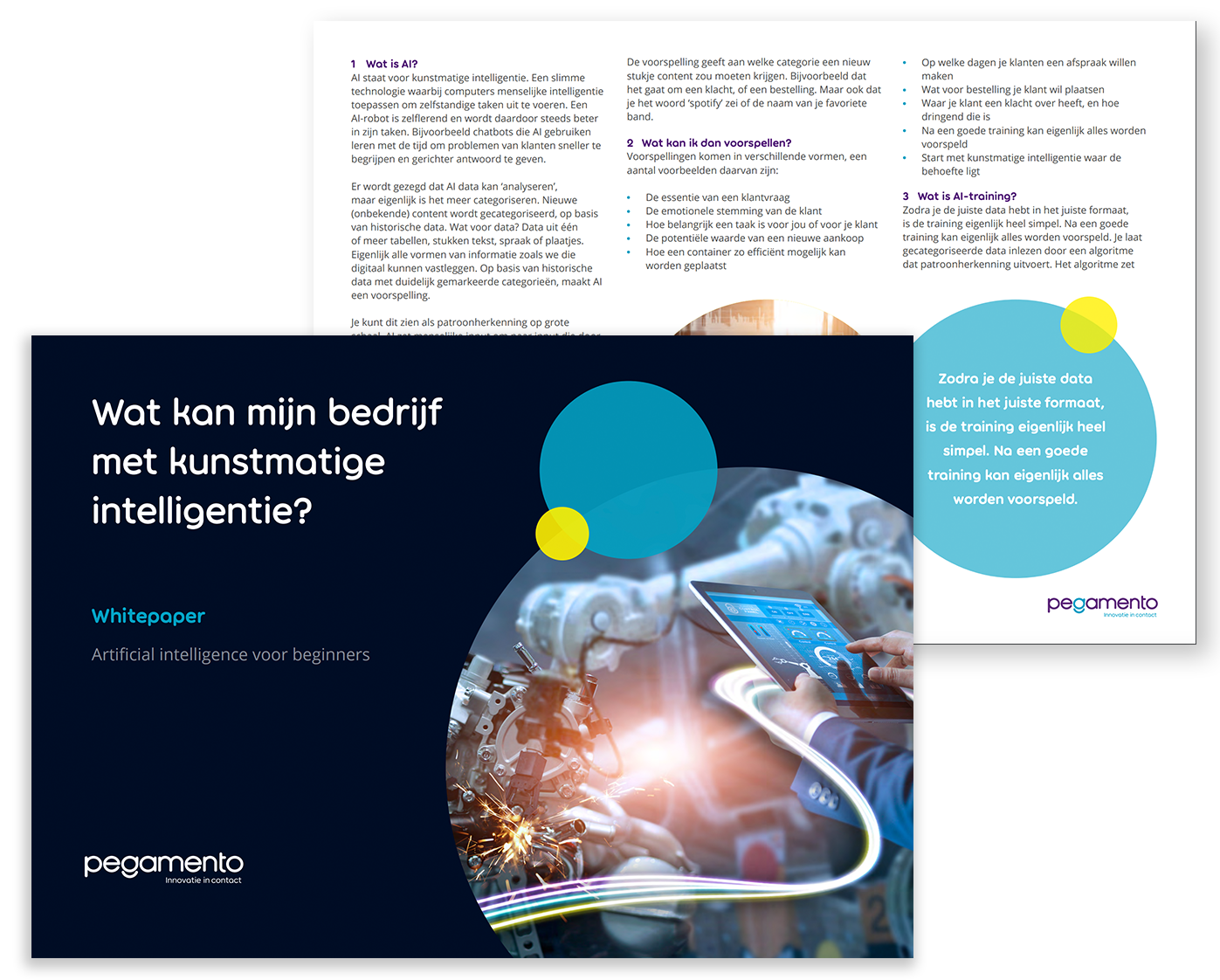We don't often stop to think about it, but we are already using artificial intelligence (AI) on a massive scale. AI has already caused many technological changes in the world. We unlock our smartphones with facial recognition, increasingly chat on websites with AI-powered chatbots, use virtual assistants like Siri, and leave the thinking and writing to ChatGPT. You could almost say we can't live without it. Artificial Intelligence is the future of technology. And how great would it be if you could use it to your advantage in your own business? We can show you how to use AI in your day-to-day operations and how it can help your business grow.
What is artificial intelligence?
Artificial intelligence (AI) is a broad term. It is a branch of computer science concerned with creating systems that can perform tasks that normally require human intelligence, such as learning, reasoning, decision making, and understanding natural language. We use AI in a wide range of applications, from chatbots to autonomous vehicles and diagnosing medical conditions. AI can solve complex problems that were previously impossible or time-consuming. It can also automate processes, improving efficiency and accuracy and reducing human error. It converts human input into input that can be used by computer systems, based on previously detected patterns and a created neural network.
We apply the technology for various purposes, including facial recognition, speech recognition, language translation, robotics, and machine learning.
What are the advantages of artificial intelligence within an organisation?
Artificial intelligence helps to automate routine tasks. In effect, the technology takes over tasks from employees. By using AI, employees can add more value to the organisation, for example, by having more time for more complex tasks and through higher productivity.
It also improves the efficiency of business processes. It does this, for example, by analysing and reporting on data that enables companies to better understand their performance and identify opportunities for improvement.
Artificial intelligence also helps predict trends. It does this through data analysis. In this way, it helps organisations make better decisions and to prepare for future internal and external developments.
Lastly, it also helps optimise products and services by tailoring them to customers' wants and needs. This is achieved by analysing customer data, for example. This data is then used to improve an organisation's products and services.
You might also be interested in reading: 3 reasons why SMEs should implement AI
Different applications of artificial intelligence within an organisation
Image recognition with AI
One of the most common applications is AI combined with image recognition. Image recognition is a technology that makes it possible to automatically detect and categorise objects, patterns, or faces in digital images and videos. Artificial intelligence then extracts useful information from this data to take (semi) action. It is then called computer vision.
For example, one of the main applications of image recognition using artificial intelligence is to identify objects in images. This can be used for a variety of purposes:
- Medical imaging: AI-based image recognition can help doctors quickly and accurately identify medical conditions in medical images, such as MRI scans and X-rays. This can lead to faster diagnoses and better patient care.
- Autonomous vehicles: It is used in self-driving cars to detect and identify objects and obstacles on the road. This allows autonomous vehicles to navigate better and to avoid accidents.
- Safety and security: Image recognition is used in surveillance cameras and security systems to detect and report suspicious activity. This can help prevent crime and protect property and people.
- Retail: The technology is used in retail to track customers and analyse their purchasing behaviour. This can help retailers improve the shopping experience and provide personalised offers.
At Pegamento, we have years of experience in the development of image recognition in combination with artificial intelligence. At Bakkerij Amstelveld, we use computer vision to increase quality control. And at Rijkswaterstaat, we use technology to detect and help prevent dangerous situations when operating bridges.
The video below shows how normal cameras detect road users anonymously using AI models. Thanks to license plate detection, information such as position, weight, air pollution, and noise pollution can be collected. This data is then anonymised and can be used to draw valuable conclusions about infrastructure use and nuisance.
Language translation & Speech recognition
We also use AI for language translation. Language translation is a technology that allows computers to translate text or speech from one language to another. Language translators are often used in environments where people from different cultures come together, such as international companies, tourist destinations, and educational institutions.
Another widely used application is speech recognition. This is a technology that allows computers to recognise and understand spoken language. Customer service departments use speech recognition to automatically transcribe and categorise customer phone calls. Based on these transcriptions, the technology can also determine the customer's emotional state. This can help streamline customer service and improve the customer experience.
Sprinklr, for example, is an omnichannel platform that uses AI for language translation and speech recognition. This allows people to chat with each other in real time, regardless of the language they speak. For example, if an employee is having a conversation with a customer who speaks a different language, an AI engine instantly translates the text into the languages of the recipient and sender as they chat. This allows everyone to communicate in their own language, rather than having to constantly translate conversations. This can speed up customer contact. The AI-powered platform not only translates, but also uses speech recognition to identify whether a customer is satisfied or dissatisfied. Based on this, the platform suggests answers that the employee can use during the conversation.
Below is an image from Sprinklr, which is using speech/text recognition to provide automatic answer suggestions to a question about parking permits.

RPA & AI
Robotic process automation (RPA) focuses on automating repetitive tasks and processes within organisations. Developers program RPA systems to automate various tasks, such as collecting data from different sources, processing invoices, and other administrative tasks. RPA is a software robot that you can think of as your virtual employee, doing repetitive tasks for you. It is not a physical robot, but a computer robot.
Because RPA cannot 'think' for itself, the technology's true power is in combination with artificial intelligence. So you can use RPA to automate business processes, while using AI to optimise and improve those processes. This can lead to greater efficiency and better results.
RPA without AI
- A service request comes in via an external portal;
- Robot retrieves data from portal and asks employee to determine urgency;
- Employee determines urgency based on the description of the leakage (interpretation of text);
- Robot creates notification and schedule based on employee input.
RPA with AI
- A service request comes in via an external portal;
- Robot retrieves data from portal and asks AI model to determine urgency;
- AI model determines urgency based on the description of the leakage (interpretation of text) and gives a reliability score;
- When the reliability score is above x per cent, the robot creates a notification and schedule based on the AI model's input. Is the score lower than x per cent? Then the robot requests a second opinion from the employee.
AI and RPA are increasingly being used across a range of industries and sectors, including financial services, healthcare, manufacturing, and logistics. Companies are reaping the benefits of AI and RPA by automating their processes, reducing errors and achieving cost savings. Pegamento has developed Mail Assistant and Process Assistant, among others.
The Mail Assistant automates an organisation's mail traffic using both technologies. A mail arrives in the mailbox. The RPA software recognises the mail and picks it out. The AI software identifies the intent and uses smart templates to automatically handle the mail traffic. The AI software can also recognise questions/requests in the mail and forward them to the right person within the organisation at the right time. This could also be our Process Assistant.
Below is a video showing how RPA in combination with AI is used to speed up the process of opening a (business) bank account.
Machine Learning
Machine learning is a subset of artificial intelligence that focuses on developing systems that can automatically learn and improve themselves without explicit instructions from a programmer. Machine learning allows systems to adapt and improve themselves based on feedback, making them increasingly effective and efficient. This is done by analysing large quantities of data and identifying patterns. These, in turn, can be used to make predictions or decisions. Machine learning is used in many different applications of AI within all kinds of industries. Its potential is therefore huge.
ChatGPT is an example created using machine learning. Through interactions with its users, the chat learns to get better and better at giving the right answer to a question.

There is some speculation that AI will overtake humans. People's concerns about the technology's potential are growing. In response, the EU has adopted a proposal to regulate AI internationally: the so-called AI Act. The legislation aims to make AI legal, ethical, and technically robust. At the same time, the legislation should ensure that AI respects democratic values, human rights, and laws, among other things.
But how can applications of artificial intelligence contribute to my organisation?
In short, AI is used for a wide range of applications in combination with technologies such as image recognition and robotic process automation. It is a powerful technology that is increasingly being used in organisations. Artificial intelligence helps companies optimise their processes, cut costs, increase customer satisfaction, and increase revenue. Processes are also becoming smarter and more efficient as a result. Companies that make smart use of the technology often have a competitive advantage over those that do not.
Artificial Intelligence within my organisation?
Pegamento implements AI in different ways and at different scales for companies in different industries. In this free white paper, we discuss our findings, recommendations, and implementation strategies.

